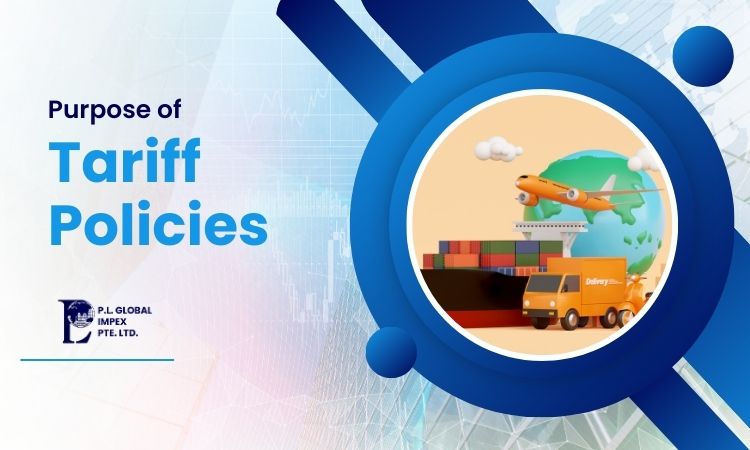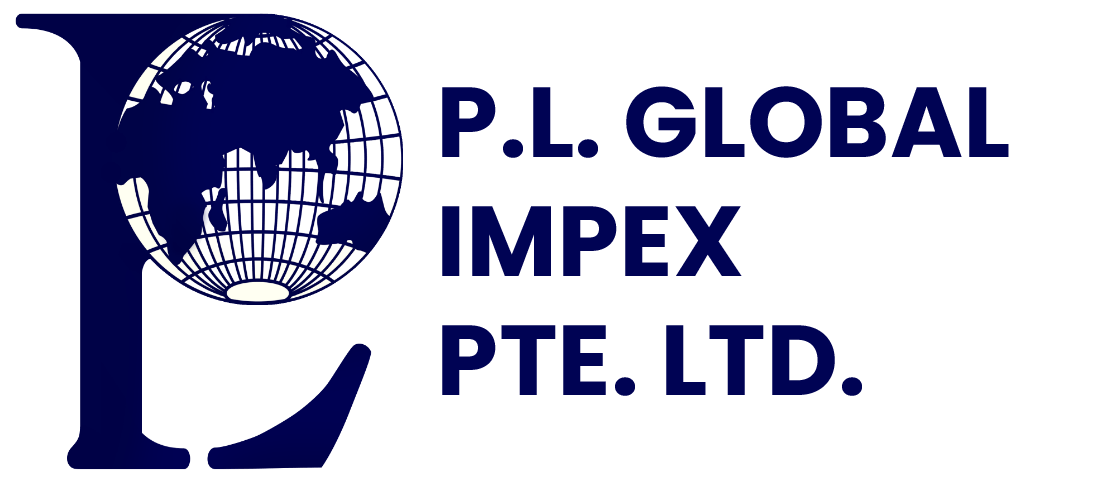Global trade involves the exchange of goods and services across borders, significantly impacting economies by promoting specialization, efficiency, and competition. It enables countries to focus on what they produce best and access a broader range of products at lower prices. While it drives innovation and reduces costs, it also brings challenges like trade imbalances and environmental issues.
Tariff policies and duties are tools used by governments to regulate international trade. Tariffs are charged as taxes on imported items, increasing their cost and decreasing their competitiveness compared to native products. Duties, often used interchangeably with tariffs, refer to the specific taxes applied to particular goods.

Understanding Tariff Policies
Tariff policies refer to a set of regulations and strategies implemented by governments to control the amount of taxes or duties imposed on goods and services that are imported into or exported from a country.
Purpose of Tariff Policies
Revenue Generation:
Tariffs are a significant source of revenue for governments, especially for countries with limited other sources of income.
Regulating Trade Balance:
Tariffs can be used to manage a country’s trade deficit by making imports more expensive and encouraging the consumption of domestically produced goods.
Safety and Standards:
Tariffs and associated regulations can be used to ensure that imported goods meet specific safety, health, and quality standards.

Key Players and Institutions Involved in Tariff Regulations
National Governments:
They are the primary entities responsible for setting and enforcing tariff policies. Ministries or departments of trade, commerce, or finance usually oversee these policies.
World Trade Organization (WTO):
An international organization that oversees global trade rules, facilitates negotiations, and resolves disputes related to tariff policies among member countries.
Global Financial Institutions:
Entities like the International Monetary Fund (IMF) and the World Bank offer economic advice and financial support, which can influence tariff and trade policies.
Types of Duties in Global Trade
In global trade, various duties are imposed on goods to regulate and tax imports and exports:
Ad Valorem Duty:
It is calculated as a percentage of the value of the imported goods. For example, a 10% ad valorem duty on a $1000 product means a $100 duty.
Transit Duty:
It is applied to goods merely passing through a country on their way to another destination. It compensates for infrastructure use and generates revenue.
Basic Customs Duty:
The primary customs tariff is imposed on imported goods based on their classification and value. It forms the foundation for additional tariffs.

How Tariffs and Duties Impact Global Trade
Tariffs and duties impact global trade by affecting the cost dynamics for importing and exporting businesses. They raise the costs of imported goods, which can lead to higher prices for consumers and reduced demand for imports. For exporters, retaliatory tariffs can make their products more expensive and less competitive in foreign markets. This can disrupt supply chains, increase operational costs, and lead to decreased trade volumes, affecting overall economic efficiency.
Economic Impact on Importing and Exporting Businesses:
Effects on Pricing:
- Tariff Effects lead to higher costs for imported goods, which can be passed on to consumers, raising prices. This can reduce demand and impact overall sales.
- For businesses relying on imported raw materials, increased costs can lead to higher production expenses and potentially higher prices for their products.
Effects on Supply Chains:
- Trade Barriers such as tariffs can disrupt global supply chains by increasing costs and complicating logistics. Companies may need to find alternative suppliers or adjust their production processes.
- Increased tariffs can make it less economical to source materials from certain countries, leading to supply chain reconfigurations or sourcing from different regions.
Effects on Market Access:
- High tariffs can restrict market access for foreign businesses, making it harder for them to compete in new markets.
- Countries facing increased tariffs may respond with their own trade barriers, escalating trade conflicts and affecting global trade dynamics.
Navigating Tariff Policies and Duties
Understanding and complying with tariff regulations can be complex, but following a structured approach can help businesses effectively manage these challenges. Here’s a step-by-step guide to navigating tariff policies and duties:
Identify Tariff Codes:
Determine the correct HS code for your products to find applicable tariffs.
Understand Tariff Policies:
Review your country’s tariff regulations and check for any relevant trade agreements.
Calculate Duties:
Compute the duties based on tariff rates and include additional costs like VAT.
Prepare Documentation:
Gather all required documents, including invoices and certificates of origin.
File Customs Declarations:
Submit the necessary paperwork to customs authorities and consider using a customs broker if needed.
Monitor Compliance:
Stay updated on tariff changes and regularly review your compliance with regulations.
Best Practices for Managing Tariffs and Duties
Navigating the complexities of tariffs and duties is crucial for businesses engaged in international trade. Here’s a guide to some key strategies and resources to help you manage tariffs and duties effectively.
Strategies for Effective Tariff Management
Stay Informed on Tariff Policies:
Regularly review updates to tariff policies and trade barriers that could impact your business. Understanding the tariff effect on your products helps in strategic planning.
Leverage Trade Agreements:
Take advantage of trade agreements and preferential trade programs that might reduce or eliminate customs tariffs. Ensure you are aware of and comply with any specific requirements to benefit from these agreements.
Optimize Supply Chains:
Adjust your supply chain strategies to minimize the impact of tariffs. This might involve sourcing from countries with lower tariffs or re-evaluating your logistics to reduce costs.
Conduct Regular Audits:
Regularly audit your tariff management processes to ensure compliance and identify areas for cost savings. This helps in maintaining accuracy in duty calculations and documentation.
Advice on Working with Customs Brokers and Trade Consultants
Select Experienced Professionals:
Choose customs brokers and trade consultants with expertise in your industry and familiarity with the specific customs tariff regulations that affect your business.
Establish Clear Communication:
Maintain open communication with your brokers and consultants to ensure they fully understand your needs and can provide tailored advice on tariff policies and compliance.
Use Their Expertise:
Leverage their knowledge to navigate complex tariff regulations and customs procedures, reducing the risk of errors and ensuring compliance with all relevant customs tariffs.
Regular Consultations:
Schedule regular consultations to stay updated on changes in trade policies and discuss strategies for mitigating the impact of tariffs on your business.

Tools and Technologies for Tracking and Calculating Duties
Tariff Management Software:
Utilize tariff management software to track tariff rates, calculate duties, and ensure compliance with current customs tariffs. These tools can automate calculations and provide updates on regulatory changes.
Customs Compliance Platforms:
Implement customs compliance platforms that offer real-time updates and analytics on tariff policies and trade barriers, helping you manage compliance effectively.
Trade Data Analytics:
Use trade data analytics tools to monitor global trade trends and tariff effects. These tools can provide insights into how tariff changes impact your supply chain and pricing strategies.
Electronic Filing Systems:
Adopt electronic filing systems for customs declarations to streamline the submission process and reduce the risk of errors in documentation.
Challenges and Solutions
Here’s a list of common challenges along with the solution:
Complexity of Regulations:
Challenge: Navigating the intricate and frequently changing tariff policies and regulations can be overwhelming.
Solution: Invest in tariff management software and consult with trade experts to stay updated and ensure compliance.
High Costs:
Challenge: Tariffs can significantly increase the cost of imported goods, impacting profitability.
Solution: Explore alternative sourcing options or adjust pricing strategies to mitigate cost increases and maintain competitiveness.
Documentation Errors:
Challenge: Incorrect or incomplete documentation can lead to delays, fines, or shipment rejections.
Solution: Implement rigorous internal checks and work with experienced customs brokers to ensure accurate and complete documentation.
Are You Trustworthy Trading Firm ?
The Bottom Line
Understanding and managing tariff policies is crucial for effectively navigating global trade. Tariff policies, as key trade barriers, directly impact the cost and competitiveness of goods across borders. These policies affect import and export dynamics, pricing, and international relations. By actively managing tariffs, businesses and governments can reduce their negative effects, optimize trade flows, and align custom tariffs with broader economic objectives and trade strategies.
